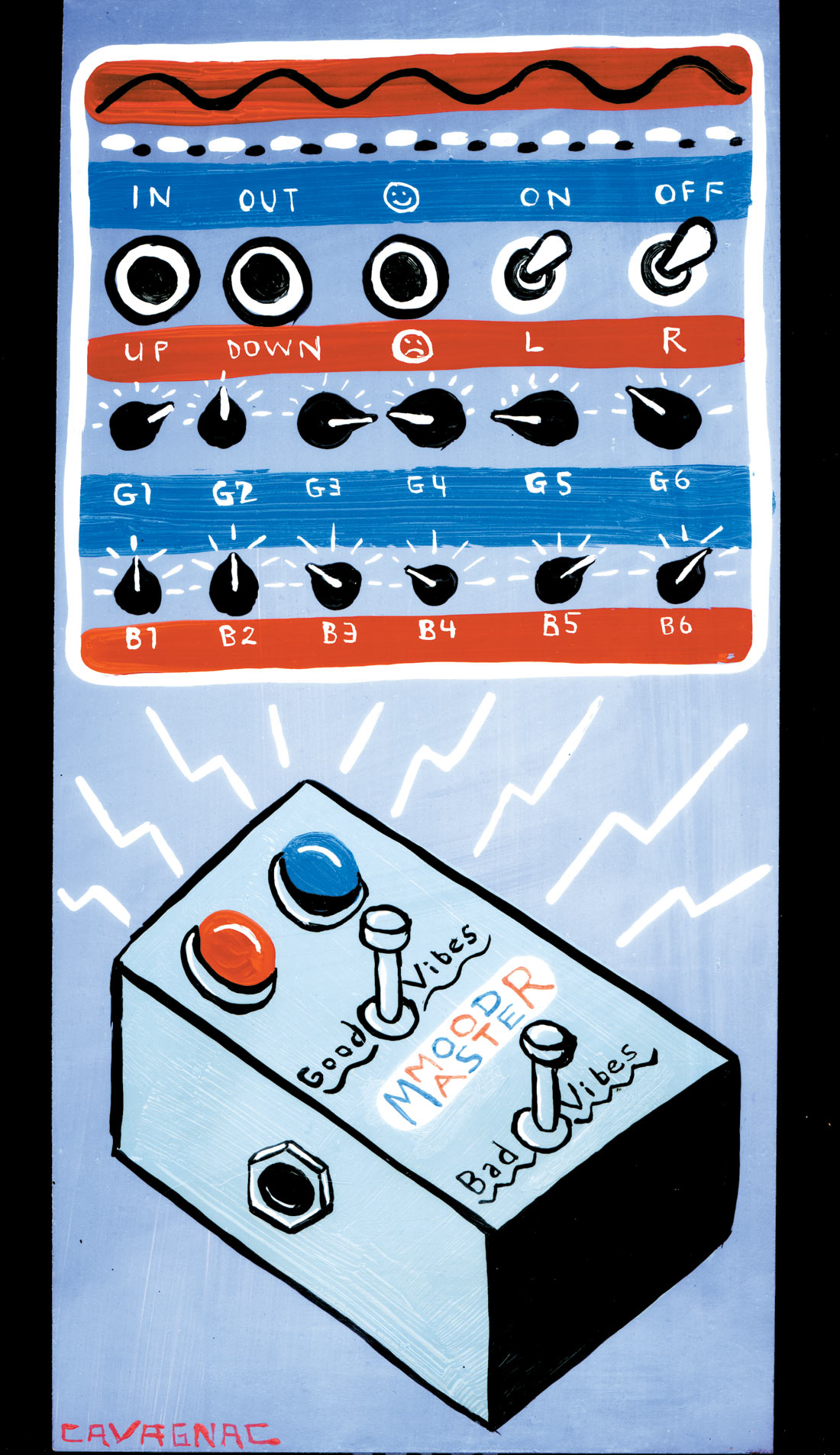David Royer and his company Royer Labs have a great reputation for their fine line of ribbon mics. When the time came to manufacture David's designs for non-ribbon mics, Mojave Audio was formed to create and market that brand exclusively. The MA-200 is the new company's first production mic. It's a cardioid condenser mic with a 3- micron thick, 1'' capsule; a JAN 5840 tube; and a Jensen transformer.
Dusty Wakeman, famed producer, bass player, and studio owner, is the president of Mojave Audio, and I was fortunate enough to work with Dusty on a record recently. The recording was for Tony Furtado, and we had the pleasure of also working with Jim Dickinson and Sean Slade for the first few days of tracking. Dusty was playing bass, and since the session was right after TapeOpCon, along with Dusty came a brand-new MA-200 in its nice flight case, with power supply, cables, and shockmount. The cool part about using the mic during this session was that I was producing three other producers, so the Mojave was definitely being scrutinized closely.
We initially set up the MA-200 as the vocal mic for the tracking session. Even though this was a scratch vocal, I thought it would be fun to hear what the microphone sounded like while recording basic takes. It was immediately evident that this mic sounds fantastic. I really liked the way it was smooth on the top and round on the bottom, and it really complemented Tony's voice in a way that I had not heard before from other microphones of similar variety. Tony was sitting in the main room, so there of course was drum bleed on the basic track. When we got a take we were satisfied with, we'd have Tony perform the scratch vocal again into the MA-200 in the big room. We did not change the placement or gain setting of the preamp. Tony would just go sit in the same seat and re-sing the lead vocal. This gave us a better scratch vocal without all the bleed. We hung onto those scratch tracks through most of the recording, and the smoothness of the MA-200 made rough mixes much more palatable, and we all agreed it was the right mic for the job. When it came time to re-sing the lead vocals, there was no question that we would use the Mojave as we had really come to love the timbre of Tony's voice on the scratch tracks. In less than a week, the Mojave was like an old friend already and not just the new mic on the block.
Okay, so one artist and one session is a good test, but I always like to test as much as possible. In between Tony's sessions, I recorded my good friend and longtime customer, Stefan George, for a demo of his new tunes. Stefan had written some country-style tunes that were very straightforward and melodic. The session involved him playing his guitar live, and all the tunes were scratch demos. Now, Stefan is one of my oldest customers, and he started recording with me when I had no good mics to speak of. Over the years, he has always managed to book time with me at about the same time I've gotten a new mic. Stefan has learned to be a good test subject, and I know well what he likes to hear from his singing. I never said anything about the Mojave being new during the whole session. At the end, while making the CD copies, he asked me if the vocal mic was something new to the studio. He then wanted to know if that mic would be around during the real recording, as he really liked the way it sounded with his voice. I pointed out to Stefan that he has used some of the more expensive mics before and was always content with whatever I put in front of him, and this was the first time he had actually commented on the sound of the microphone. I then asked him what it was about the mic that he liked. What he said was he felt that the microphone really captured his voice "as is" and sounded very natural. He felt it enhanced the good qualities of his voice and did not attenuate the upper head sounds. And he was right. It does not make the voice more nasal sounding. It sounds full but not overly thick. Maybe it's that JAN tube or the Jensen transformer, or maybe because David just understands electronics as the components are the same as most other "affordable" studio condensers, and yet the MA-200 sounds as good as microphones that are twice its price. If this is the type of quality and affordability that Mojave will be offering with future designs, then this is a company that will equal the success of Royer Labs, and that is a good thing for all of us gear geeks and recordists. ($995 street; www.mojaveaudio.com)




_disp_horizontal_bw.jpg)